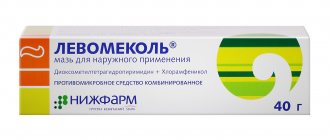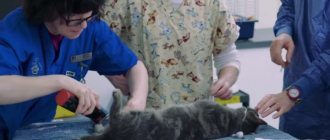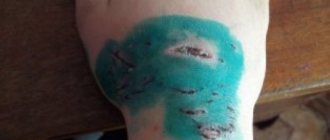Save the article:
For many people, a four-legged friend is not just a creature from the natural world, but truly a Friend with a capital F. And it’s scary to lose such a pet: in order for your beloved purr to be found if lost, it is no longer necessary to attach a medallion with an engraving of the owners’ phone number to the collar. Instead, today a procedure such as microchipping cats .
Even if someone tries to pass off someone else’s cat as their own, the chip will indicate who is right and who is wrong. In addition to establishing the rights of the owner of the animal, with such a kitty you can cross the border of the state, because this is a full-fledged passport of the animal. Using this modern procedure, it is easy to monitor representatives of elite breeds. In a word, it is very necessary to microchip your pet.
What is chipping
A chip is a microcircuit with a unique 15-digit code, a receiver, a transmitter, a multi-turn antenna and a code memory unit. The microcircuit is contained in a sterile biocompatible glass capsule. The size is slightly larger than a grain of rice. The length of the device is 13 mm, diameter 2 mm. The unique number remains assigned to the cat for life; this original passport is entered into the database of the world electronic system (ISO 11784, ISO 11785 standards).
What information does the chip carry?
- Date of Birth;
- gender of the animal;
- breed;
- color;
- owner's personal data;
- owner's phone number.
This information will be enough to clarify the “personality” of the cat.
If you are constantly afraid of your cat’s whereabouts, you can additionally purchase a Glonass GPS beacon for microchipping.
How data is read from a microchip
global $ads_google;
//data-ad-slot=”2475549904″ $ads_google = empty($ads_google) ? false : true; ?> if ($ads_google == false) {?> $ads_google = true; ?> } ?> The chip itself does not transmit any electromagnetic waves, just as it cannot be a GPS device, although such a nuance of chipping would significantly facilitate the search for a missing cat without an additional Glonass-GPS system card.
To read all the information, use a scanner designed for this purpose. The implanted device is passive until it encounters the scanner. There is no radiation from the microchip.
If the scanner shows the owners of a lost cat that kind people took to a shelter or veterinary clinic, then specialists call the grieving owner back and tell him the good news about the found pet. Although this is an excellent development for the loss of a cat, it sometimes happens that the animal does not end up in a facility with scanners that can read such information. In this case, you need to continue searching using all available methods.
Do not forget that all changes regarding the phone number or owner's name must be updated in the microchip database. The service life of the product is at least 25 years and does not require replacement.
Detailed description of the process
Would you like to have your pet microchipped, but are you afraid that he will be hurt during the manipulation, and then all his life the poor thing will feel discomfort from the presence of a foreign body in the body? Completely in vain! This procedure is completely safe and virtually painless, and after it microchipped cats do not experience any discomfort.
What does the chip look like? Photo
The identification chip implanted under the skin of an animal is very small in size. The capsule in which it is placed is about one centimeter in length and no more than two millimeters in width. This is the size of one oblong grain of rice. It is made of ceramics or high-tech glass. The presence of these materials in the body of any living creature, be it an animal or a human, is absolutely safe, since they are hypoallergenic and do not cause a negative reaction from the immune system. The body simply does not “notice” them.
Why is it better to microchip a cat?
The benefits of microchipping cats are just beginning to be appreciated in different countries. The procedure itself was introduced not so long ago, and debates around its significance are still ongoing.
Advantages of introducing a microchip into cats:
- the chances of returning a lost animal are high;
- in good veterinary clinics, a scanner quickly reads information and simplifies the procedure for accepting an animal;
- a chipped cat cannot be replaced, and a stolen animal cannot be used at exhibitions.
It is worth mentioning that scanners for reading information from a chip are not yet available everywhere. But this is good protection for seals of rare and especially valuable breeds that attend international exhibitions.
If you want to take your cat abroad, you should know that not all countries accept animals without a chip.
Benefits of RFID
Previously, other methods of identifying pets were used - for example, tattoos, tags. But they have disadvantages. Such signs lose shape or clarity with age. The collar is also unreliable because it is easy to remove.
The microchipping procedure is also gaining popularity because it is easy for a veterinarian to track a patient’s medical history and record keeping.
RFID of a cat is required when entering another state
Some devices have additional capabilities. One of the latest developments is microchips with heat sensors. When the doctor conducts a scan, not only standard information is displayed on the screen, but also the level of body temperature.
However, the use of chips has disadvantages. Not all veterinary clinics are yet equipped with devices for reading information. For this reason, the main target audience is mainly owners of cats who are exported abroad. More and more developed countries agree to allow foreigners with animals into their territory only if they have a chip. Breeders of rare breeds resort to the procedure when there is a risk of theft or substitution.
Attention! The presence of a chip does not guarantee the cat's owner automatic access to all countries of the world. Before entering the territory, you should check the national legal requirements regarding the importation of animals.
The nuances of traveling with animals on an airplane
Is microchipping a cat necessary?
It’s good that technology does not bypass our smaller brothers: created databases operate in the same way as human ones. Additional features include the ability to find out about vaccination dates with all related information through a mobile application. The appendix indicates the nearest veterinary points. There is also an information block about missing cats and dogs.
So far, chipization is happening on a voluntary basis, but the law on introducing this procedure began to be developed in 2011. It is expected that mass microchipping of domestic cats and dogs will begin in 2021. If the law is adopted, all livestock of both legal entities and individuals will be entered into the database, which may also affect taxes. If the procedure becomes mandatory, animals whose owners find it financially burdensome to pay for chip implantation may end up on the street.
Microchipping of cats for traveling abroad
Let's say a family is going to visit EU countries and take their favorite cat with them. It is worth checking in advance about the laws governing the transport of pets. Europe is in a hurry to adopt new technologies and takes a responsible approach to the issues of keeping pets, which is why the cat must have a chip. Chip certificate - ISO 11784.
The veterinary passport and pedigree must not contradict the information indicated on the microchip
That is why, if you plan to travel abroad, you should ask the embassy of the host country whether the animal is required to be microchipped.
Where is the data stored on the chip?
After inserting the device under the animal’s skin, the clinic administrator first enters it into the clinic’s local database. And then it exports the data to the database of the country where the procedure was performed. Don’t forget to ask the operator which database he entered your cat into.
The largest databases of microchipped animals:
- https://new.animal-id.ru/ is the largest Russian one, it’s better to start with it;
- https://www.europetnet.com/ - the largest European base;
- https://animal-id.net/ is the largest Ukrainian database. After registration, information about the pet is available in the www.europetnet.com database, since both are partners.
Separate animal bases can be created in regions. In any case, after the operator has entered your cat into the database, you can add or correct information about it yourself. Of course, in addition to the chip number, the type of animal and its breed. In order to supplement information about your pet, you must register on the database website, confirm ownership of the animal and make the necessary changes. It is worth noting that in most Russian databases you can enter data about the animal and the installed chip yourself.
How is a cat microchipped?
global $ads_google;
//data-ad-slot=”2475549904″ $ads_google = empty($ads_google) ? false : true; ?> if ($ads_google == false) {?> $ads_google = true; ?> } ?> The chip insertion process is quick. This does not cause any pain or inconvenience to the cat. Before the procedure, the animal must be checked for diseases. If the disease is detected, then treatment is prescribed - at this time the cat cannot be microchipped , as in the period after it. The animal's immunity should not be weakened.
An injection is made using a special sterile disposable syringe with a device under the withers between the shoulder blades, implanting a microchip. This will not cause any discomfort to the pet: the device is too small and almost imperceptible.
After the chip is implanted, a sticker is added to the animal’s veterinary passport confirming the microchipping procedure.
No additional measures are required, the animal continues its normal life.
Precautions and safety precautions
The chips do not pose any danger to animals and do not cause them any discomfort. The place where the microcircuit is implanted is not painful; there is no swelling or tumors.
However, before introducing the capsule under the cat’s skin, the veterinarian must make sure that the animal is absolutely healthy.
It is also very important to make sure that the cat has not been previously microchipped. All you need to do is do a test scan.
Owners of microchipped cats should also be aware that the capsule inserted between the shoulder blades can move under your pet's skin. Typically, the trajectory of such migration does not exceed a couple of centimeters and does not pose any dangers.
It is believed that the withers are the ideal place for a cat to implant a chip precisely because here the capsule is best fixed and will not “migrate”, no matter how active its owner is.
But if the location is not determined very well, and the injection technique is not sufficiently consistent, situations are possible when the initially introduced capsule did not find “its place” immediately.
If you have a small kitten, you will be interested in reading about how to recognize the gender of a kitten, what rare and beautiful names there are for cats, how to calmly bathe a kitten, what and how to feed it correctly, and also what diseases kittens suffer from.
However, there is no reason to believe that such a situation is a reason for panic; it does not affect the performance of the device (except that the scanning procedure will take a little longer, since the microcircuit will need to be found under the skin) and the well-being of the pet, most likely for some time. Then the microchip will eventually “install”.
Reviews from veterinarians about microchipping
Veterinarians evaluate the procedure from a medical point of view: since the implanter is disposable and sterile, there is no risk of infection. Also, the device is implanted into the withers, the animal will not be able to comb this place, so there is no risk of infection either. However, veterinarians warn that the microchip will finally take root in 6-7 days, and there is no threat of movement throughout the animal’s body.
An animal can be microchipped at any age, even a kitten, as long as it is healthy.
Cost of microchipping a cat
Now it's time to discuss how much it costs to microchip your beloved pussy. The cost of microchipping a cat depends on several factors. The manufacturer brand, the type of microchip, as well as the location of the procedure play a role - the doctor can come to your home along with the necessary equipment. This will significantly save time, but also raises the price of the service.
If a chip is implanted in a clinic, the average price is 2,000 rubles both for the procedure itself and for processing all the data on the animal and registering information.
Caution won't hurt
Although the operation is simple, it should not be performed on sick or weakened animals. Although the capsule is coated with a material that is not rejected by the cat's body, some bacteria still enter. With low immunity, there is a high risk of local inflammation.
If the pet was purchased as an adult, before microchipping, be sure to check whether the animal has an already installed identifier. Of course, a second chip will not harm a cat or dog, since it is safe for the body, but there will be a fair amount of confusion.
In the absence of a scanner, the chip is inactive and completely harmless to the animal and owner
After administering the capsule, it is necessary to ensure that the animal does not scratch the injection site and monitor the general condition of the wound. In case of redness within a week after injection, it is best to contact your veterinarian again. In rare cases, an animal develops intolerance to the biomaterial from which the capsule is made; inflammation or suppuration is a reason to immediately consult a doctor.










